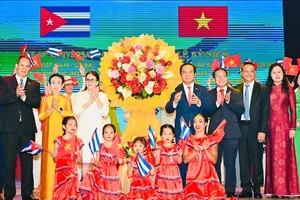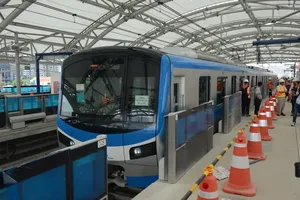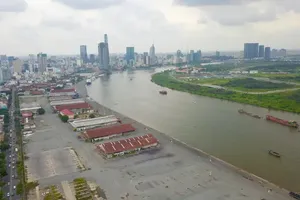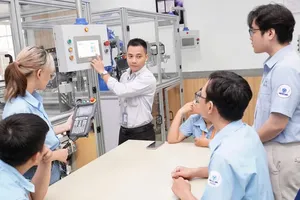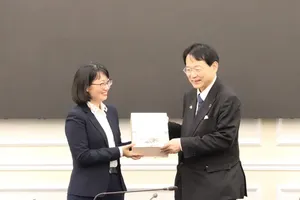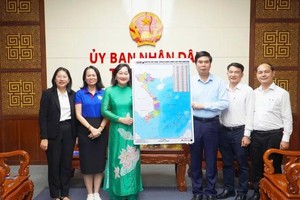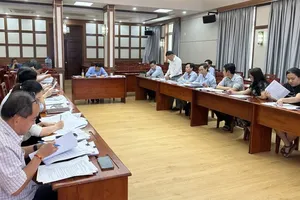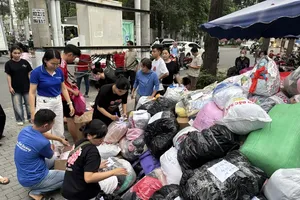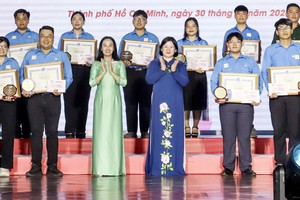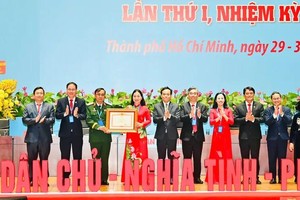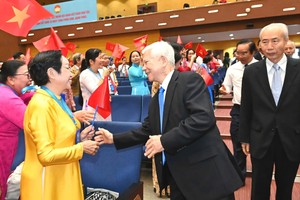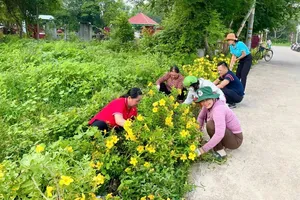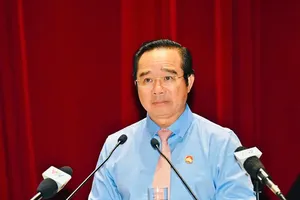 |
Chairman of the Ho Chi Minh City People's Committee Phan Van Mai speaks at the meeting |
This report was heard this morning when the 10th People's Council of Ho Chi Minh City opened its 10th session to review the municipal People's Committee’s important reports on socio-economic development with the participation of Secretary of the Ho Chi Minh City Party Committee Nguyen Van Nen, former Secretary of the Ho Chi Minh City Party Committee Nguyen Thien Nhan, and Chairman of the Ho Chi Minh City People's Committee Phan Van Mai.
Chairwoman of the municipal People’s Council Nguyen Thi Le and her Vice Chairman Nguyen Van Dung chaired the meeting.
At the meeting, Chairman of the Ho Chi Minh City People's Committee Phan Van Mai presented a summary report on the mid-term evaluation of the implementation of socio-economic development tasks and a thematic report on the results of the implementation of 4 development programs under the Resolution of the 11th Party Congress of Ho Chi Minh City.
Difficulties in economic and social growth
According to reports, in the first half of the term, Ho Chi Minh City was affected by the Covid-19 epidemic and the world’s volatility; subsequently, GRDP growth in 2021 declined deeply to -5.36 percent. It recovered in 2022 and grew 9 percent. In the first 6 months of 2023, the GRDP reached 3.5 percent; however, some economic indicators did not meet expectations. The retail sales of goods and services, import and export basically maintained a good growth rate while the industrial sector dropped sharply over the same period.
In the first half of the 2020-2025 term, Ho Chi Minh City spent a great deal on investment and development of urban infrastructure. Many projects which had been put into use have produced positive results.
The training and management of revenue were effectively implemented, reaching 109 percent of the estimate and increasing the average annual revenue by 26 percent. Ho Chi Minh City has assigned and allocated a detailed plan of public investment capital of more than VND155 trillion (US$ 6,587,448,015) while remittances reached $18 billion, up 68 percent compared to the first half of the previous term.
The southern largest city has focused on strongly developing new economic sectors and business models. More than 100,000 new businesses were established, attracting FDI reaching $12.6 billion.
The cultural-social aspects developed sustainably with impressive achievements. By the middle of 2023, the supply of professionally active physicians in patient care per 10,000 HCMC resident population was 20.4 doctors and the number of hospital beds per 10,000 HCMC resident population was 43. The total fertility rate was at least 1.4 children per woman. Up to now, the southern metropolis has had 343 schools satisfying national standards whilst the number of classrooms per 10,000 population of school age was 294.
It is forecasted that by the end of 2023, there will be no more households below the national poverty line and only 0.7 percent of poor households according to the city poverty line. Under the city's poverty standards for the 2021-2025 period, a poor household has an average income of below VND36 million ($1,530) per person per year, and a near-poor household gets VND36 million to VND46 million ($1,950).
In the first half of the term, Ho Chi Minh City spent a great deal of resources to invest in urban infrastructure development. Several national key projects on traffic and climate change adaptation are high in the southern largest city’s list of priorities in addition to a focus on developing information and telecommunications infrastructure. Accordingly, Ho Chi Minh City has allocated over VND 25 trillion for three projects for linking regions, ring roads and highways. Ho Chi Minh City has also built new 14.2 million square meters of residential floors.
In addition, Ho Chi Minh City continued to promote administrative reform, offering solutions to improve the ranking of the PAR, PCI, PAPI indexes.
Eight key solutions in the second half of the term
 |
Delegates at the 10th session of the 10th People's Council of Ho Chi Minh City which opened on July 10 (Photo: SGGP) |
In the second half of the term, the People's Committee of Ho Chi Minh City proposed eight groups of key solutions to effectively implement the Resolution of the 13th National Party Congress and the Resolution of the 11th City Party Congress.
In the eight groups of solutions, Ho Chi Minh City will focus on promoting the effectiveness of mechanisms and policies issued by the Central Government, such as Resolution No. 31-NQ/TW, Resolution No. 29-NQ/TW and Resolution No. 98/2023/QH15.
Furthermore, Ho Chi Minh City will pay attention to the improvement of the quality of planning, investment in building infrastructure for traffic, water supply, drainage, wastewater treatment, healthcare, education and training, especially key projects on regional connectivity while promoting administrative reform in association with effective implementation of urban administration.
Last but not least, the city will focus on sustainable economic development based on the application of science, technology, innovation and increase labor productivity in association with the program of socio-economic recovery and development in the period of 2022-2025.
Ho Chi Minh City strives for an average Gross Regional Domestic Product (GRDP) growth of 7 percent a year. Specifically, GRDP per capita will reach US$8,500 a person by the end of 2025, aiming to reach the target of $14,500 per head by 2030.
In addition, Ho Chi Minh City will pay heed to socio-cultural development in sync with economic development, which serves as a foundation for the city’s sustainable development. The country's economic hub also took heed of the promotion of all resources for synchronous urban infrastructure system development and social security. It has been taking care of people in serving the cause of the nation’s revolution, supporting the poor, and protecting workers and strengthening foreign affairs and international cooperation.
